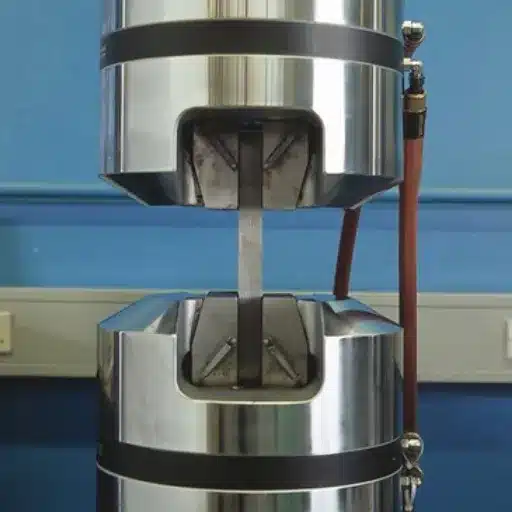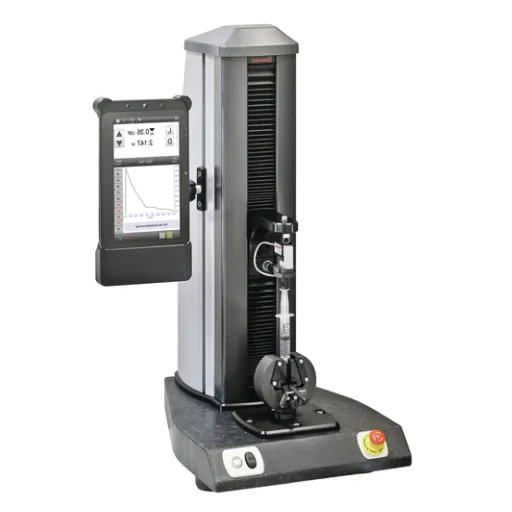The article will elucidate both the significance of the creep rupture test and its methodology, providing a broader understanding of how this process influences material selection, safety considerations, and product development decisions. By the time you are done reading, you will grasp why the mastery of this test needs to be at the forefront of materials engineering and effective utilization.
Introduction to Creep and Stress Rupture Testing
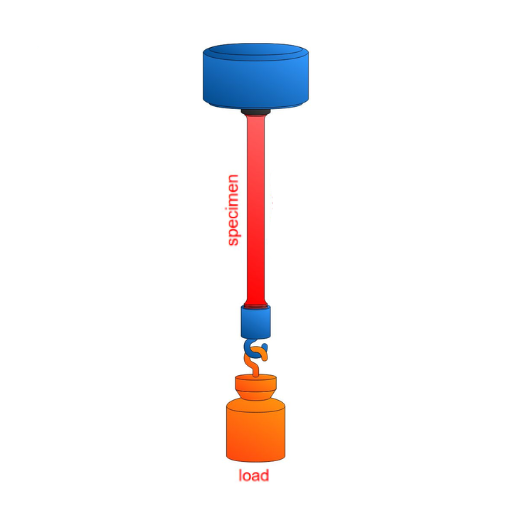
Creep and stress rupture testing are long-term observation methods conducted at high-temperature applications to determine the nature of a material when exposed to stress for an extended duration. Creep tests examine the longevity to which a material suffers deformation, while stress rupture tests emphasize the time required for material failure under constant stress. These tests thus assess a material’s ability to withstand applied loads over an extended period under severe service conditions. To make the right material choice, data on material topography, as well as considerations of safety and structural integrity, are taken into account.
Definition of Creep and Stress Rupture
A material experiences slow deformation over a long period, called creep, under a constant mechanical stress. Generally, it occurs at a temperature relative to some percentage of the melting point of the material. This slow deformation is a function of microstructure, temperature, load application, and the duration of the load application. This is a crucial concept in the design of components subjected to sustained mechanical stresses and high-temperature operations, such as turbine blades for jet engines and components for nuclear reactors.
Stress rupture, considered by Bonney to be an independent phenomenon, essentially describes the failure of a material due to sustained exposure to a load or stress over time. Unlike creep, which considers deformation, stress rupture primarily focuses on the time to failure and the conditions under which this failure occurred. This is one of the most critical considerations in evaluating materials intended for use in extreme environments, where reliability over many years is essential.
Recent studies and data provide strong support for incorporating predictive modeling into creep and stress rupture behavior studies. At the forefront are computational tools that utilize machine learning algorithms to analyze massive databases, thereby facilitating more accurate predictions of material behavior under high-stress and high-temperature conditions. In the meantime, testing methods that have recently emerged can, in the presence of accelerated life testing, analyze data from in situ monitoring that sheds light on the creep and stress rupture mechanisms. Together, these advances greatly enhance the overall reliability of materials for critical applications, spanning industries from aerospace to energy, thereby rendering them truly safe and efficient.
Importance in Materials Science and Engineering
Materials science and engineering are of paramount importance for material development and optimization in various applications. With properties pertinent to strength, corrosion resistance, or thermal stability under investigation, designers can mold and fabricate components into a sharply defined configuration that meets stringent operational requirements. In general, the understanding of creep behavior and stress rupture performance comes under heavy scrutiny in industries such as aerospace, where materials are required to resist extreme conditions over long periods. Such areas bode very well for advanced testing techniques, including accelerated life testing and real-time condition monitoring, to ensure a finely pinpointed prediction of material life span and performance. In turn, these activities contribute to the increased reliability and safety of engineering systems, which are essential, along with breakthroughs in high-performance materials, for other fields such as renewable energy, biomedical devices, and transportation infrastructure.
Overview of the Creep Rupture Test
The creep rupture test, therefore, provided the primary means of evaluating the long-term deformation and strength characteristics of materials subjected to sustained stress and elevated temperatures. This test simulates the conditions to which materials may be subjected over more extended periods of operation, especially in high-stress environments such as power plants and aerospace components. Because the test applies a constant load or stress to the test specimen while controlling the temperature, it measures the time taken to rupture under these conditions and the creep strain over the specified period.
Methodology for Conducting Creep Rupture Tests
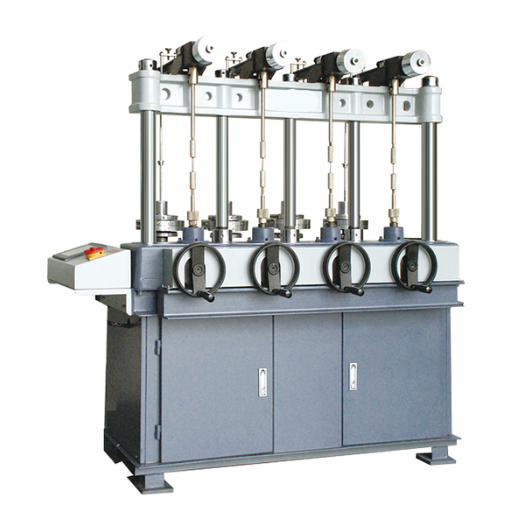
-
Preparation of Specimen
The first step in creep rupture testing is specimen preparation. The material sample shall be machined to the exact specifications of dimensions and geometry as prescribed by the standards, for example, ASTM E139. Specimens should always be of the same size to receive comparable data, particularly in creep tests.
-
Test Setup
The specimen is then placed into the creep-testing machine, which is designed to apply a constant load or stress in a controlled environment. The machine has a furnace to maintain the temperature and devices for measuring elongation and strain. The load is calibrated, and the temperature is checked before the test to ensure the parameters remain within the test specifications’ limits.
-
Condition of Tests
Test conditions, i.e., temperature and stress level, are chosen according to the service conditions the material will meet. These two variables are maintained constant throughout the test. A data acquisition system records the values of strain against time intermittently to monitor the material’s behavior under stress.
-
Execution of Test
A sustained load is applied to the specimen at the desired temperature by the testing machine immediately on the commencement of the test. Once the specimen breaks (ruptures), the test stops, and the creep deformation and rupture time of the specimen are recorded. Creep strain rate and stress-rupture life may thereby be determined.
-
Data Analysis
With the completion of the test, the recorded data is analyzed to generate stress-rupture curves and creep rate graphs, which can be used for predicting material performance under similar operational conditions and thereby guide the material selection and design process.
Preparation of Test Samples
To ensure accurate and reliable results during creep and stress-rupture testing, test samples must be prepared according to stringent standards. Specimens are typically machined from the material under test to precise dimensions, as specified in ASTM E139 or similar testing standards. The preparatory procedure involves cutting, shaping, and polishing the material into uniform specimens to minimize surface defects that could affect test results. The dimensions and geometry of the test samples must be precisely controlled to ensure a consistent stress pattern in the tests. There is also an examination of the samples for defects such as cracks and inclusions that could jeopardize the validity of the results.
Equipment Used in Creep and Stress Rupture Testing
Creep and stress-rupture testing are quality evaluation tests that require specialized machinery capable of maintaining common conditions for extended durations. A universal testing machine or a creep testing machine is typically employed, along with precise load frames and temperature-controlled chambers, to simulate the high-stress and high-temperature environments of real-life applications. These machines have load mechanisms that apply precise loads, holding on to the vibrations, which is a constant stress throughout the testing.
The temperature-control units, such as furnaces or induction heaters, ensure that the temperature remains constant and uniform, which is crucial in conducting this type of test. For deformation measurement, highly precise extensometers or strain gauges are used to capture incremental changes in strain over time. Data acquisition systems are indispensable for continuously monitoring parameters such as loads, displacement, and strain, enabling detailed analysis. Specific implementations are secured with fail-safe mechanisms in the event of abnormal conditions that could compromise integrity. These components, working together, ensure that the evaluation results truly reflect the tested material.
Key Factors Influencing Test Results
-
Material Composition and Homogeneity
A change in chemical composition or a lack of structural homogeneity in a material significantly influences the test outcome. Factors such as impurities, inclusions, or microstructural inconsistencies affect the mechanical behavior and reliability of test results.
-
Ambient Conditions
Temperature, humidity, exposure to corrosion agents are extrinsic factors affecting the material performance during the tests. One must strive to minimize their effects or maintain these parameters constant by keeping the environment under controlled conditions.
-
Calibration of Test Equipment
Calibration is necessary to obtain accurate values from load cells, extensometers, and other measurement devices. If deviations from the calibration value occur, such an error can lead to a significant miscalculation in measurement.
-
Preparation of Specimens
Dimensions and surface finish, or roughness, are aspects to consider. Finally, alignment of specimens during testing is of great importance because poorly prepared samples or samples not correctly aligned may lead to premature failures and impaired results, thus jeopardizing the validity of the tests.
-
Loading Rate and Test Procedure
The manner in which a load or stress is applied affects the material’s response. Therefore, strict adherence must be given to the test procedures laid down by organizations such as ASTM and ISO for comparative and reproducible results.
Applications of Creep Rupture Tests in Various Industries
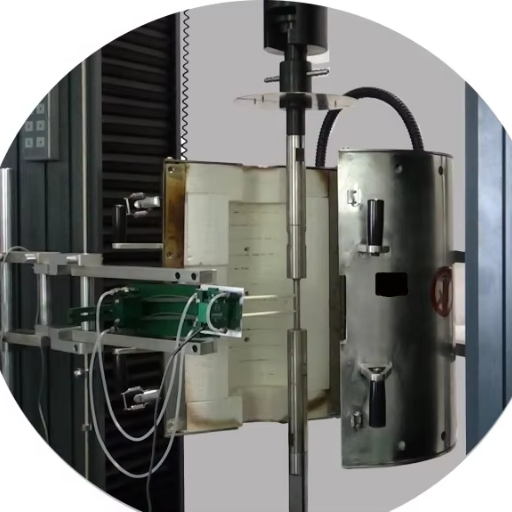
In popular terms, creep rupture tests are conducted in all industries where the long-term performance and reliability of a given material are evaluated under combined loads and elevated temperatures. For aerospace applications, the testworthy materials include turbine blades and jet engine components, as well as other high-temperature materials. The energy sector utilizes creep rupture testing to examine materials used in power plants, including boiler tubing and turbine components, where high temperatures and pressures prevail. The test is applicable in the petrochemical and chemical processing industries for evaluating the endurance and lifespan of pipe systems, storage tanks, and reactor components. Creep rupture tests provide valuable insights into the long-term performance of materials and inform the design of materials that can sustain actual operational requirements.
Aerospace Industry Use Cases
The aerospace industry requires creep rupture test methods to evaluate the long-term behavior of materials under high stress and elevated temperature conditions typical of jet engines, turbine blades, or aircraft structural components, ensuring that materials will withstand service stresses over extended durations without failure, thereby ensuring safety and reliability in flight. Such tests further assist in material selection and design development for components that operate in extreme thermal and mechanical environments, such as rocket engines or hypersonic vehicles. By reproducing operational environments, the creep rupture test assists materials advancement for aerospace, thereby helping the efficiency and innovation of the industry.
Applications in Energy Sector
Creep rupture testing is crucial in the energy sector to ensure that materials used in power generation are utilized reliably throughout their lifetime. Components such as turbine blades, boiler tubes, and heat exchangers in thermal and nuclear power plants typically operate under high temperatures and stresses that persist for years. Thus, performing creep rupture tests will further assist in assessing material life and suitability for use, thereby eliminating the risk of unintended failure.
With advancements in materials science and computational models, modern creep rupture tests are equipped with high-precision experimental equipment and AI-adaptive analytics. This tandem arrangement provides more accurate predictions of failure time and stress-strain behavior. For instance, in renewable energy technologies, such as in concentrated solar power systems, materials are energized through repeated thermal cycling, and creep rupture analysis becomes essential to engineer for durability and efficiency. Such insights significantly contribute to energy sustainability, reduce maintenance costs, and enhance the safety of critical infrastructure.
Construction and Manufacturing Insights
Creep rupture testing provides essential evaluation for construction and manufacturing regarding the long-term strength and reliability of a material when subjected to sustained loads and elevated temperatures. In particular, it is especially crucial for materials used in structures, such as load-bearing structures, pipelines, and industrial equipment that require heating. By placing materials under highly controlled stress conditions for extended periods, engineers can study the time-to-failure, creep rates, and limits within which the material can maintain itself under a particular load.
Among the primary applications are the design of structural elements for bridges and skyscrapers, where understanding creep behavior enhances the safety and durability of the infrastructure. Likewise, in manufacturing, these tests guide the selection of materials for components that operate in severe environments, such as turbines or pressure vessels. In short, by applying creep rupture test results to computer simulation and design toolkits, industry-wide improvements are achieved in material performance, resulting in a lower rate of failures and compliance with regulatory standards, all while maintaining an economical and safe approach.
Benefits of Conducting Creep Rupture Tests
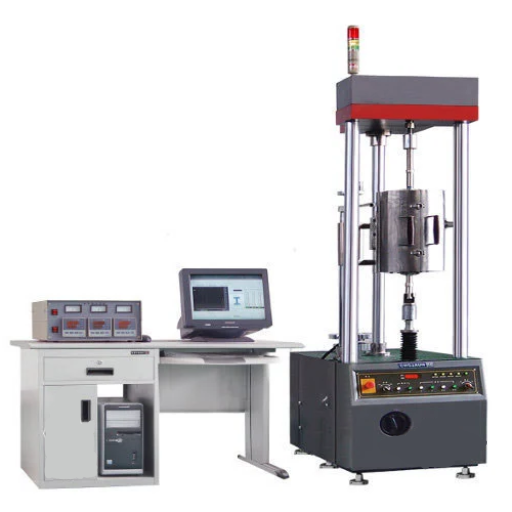
Creep rupture tests are used to study the long-term performance of materials subjected to high stresses and temperatures. These tests help pinpoint the exact life of the material considered, deformation under load, and conditions leading to material failure. Given these issues, an engineer can determine the design and selection of materials for specific applications, such as power plants, aerospace, or chemical processing. Moreover, the data gathered can be used to certify against safety standards, reduce risk of catastrophic failure, and cut maintenance costs by pinpointing failure points and conditions under which they will fail.
Predicting Material Lifespan
A prediction of the material lifespan can be achieved by testing its behavior in particular conditions including mechanical stress, exposure to temperature, and corrosive environmental factors. These are further simulated through high-end and advanced testing methods, such as exhaustion testing, creep testing, or accelerated aging tests, to determine their long-term performance. At times, this data helps determine points of failure and the evolution of degradation along the line. When coupled with numerical modeling and machine-learning techniques, an engineer can thus more accurately assess the hazard and performance of materials over time, ensuring reliability and safety in engineering systems.
Improving Product Design and Reliability
Creep rupture tests are conducted to determine the durability of a material over time and its capacity to perform under sustained stresses and elevated temperatures. This information aids in designing an improved product and ensuring reliability. When the time to failure and deformation of the material is understood, engineers can select materials best suited to high-stress applications such as power plants, aerospace parts, or pressure vessels. Moreover, information from these tests will predict service life, provide optimized safety factors, and reduce the possibility of catastrophic failures. These improvements will yield better design integrity and cost-effective maintenance from a real-world performance perspective.
Ensuring Compliance with Industry Standards
To ensure that an organization complies with industry standards, a systematic approach is necessary to meet regulatory and performance requirements. First, each organization must list standards that are applicable in their field, such as ASME, ISO, or ASTM. They must conduct regular audits and ensure thorough documentation concerning materials, processes, and products tested to adhere to those standards. Training employees and standardizing company procedures for compliance is also essential so that safety and quality are assured throughout the organizations.
Challenges in Creep Rupture Testing
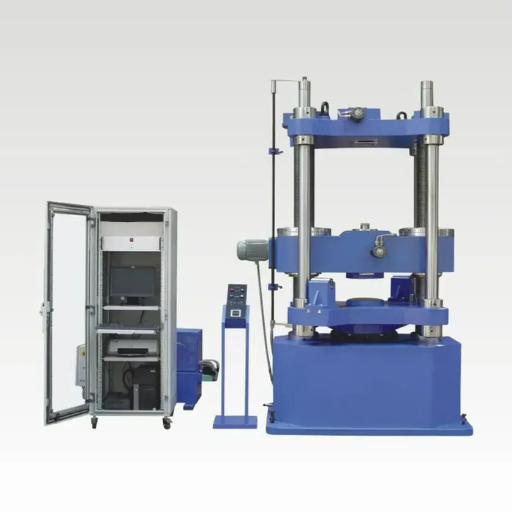
There are significant challenges to the performance of creep rupture testing, some of which may affect the accuracy and reliability of test results. An important concern is the lengthy duration required to perform such tests, which can sometimes extend into months or years, thereby delaying the qualification of materials and increasing their cost. It is also very challenging to maintain a consistent set of environmental conditions (including temperature and stress levels) for an extended period, despite the best efforts, with variations creeping in. Variation in the inhomogeneity of materials or inconsistency in specimen preparation may also tend to give skewed results. Moreover, interpreting accelerated time data to assess actual long-term behavior requires a complex array of considerations, advanced modeling, and analytical approaches to make an appropriate extrapolation.
Common Errors in Sample Preparation
- Incorrect Sample Dimensions – Failure to conform to the specified dimensions may result in an inaccurate distribution of stress and, consequently, an unreliable result.
- Not Cleaning the Specimens Properly – The presence of oils or other dirt could interfere with testing in some unwanted way.
- Improper Surface Finish – Any irregularities on the surface, like roughness or scratches, would act as stress concentrators and thus distort the results.
- Non-Homogeneous Material Composition – Differences in material homogeneity will induce tests to give inconsistent results during analysis.
- Poor Handling in Preparation – Distortions and micro-cracks can be inflicted upon the specimens if adequate care is not taken while handling, thus rendering the structural integrity of the sample questionable.
Equipment Limitations and Long Testing Durations
Limitations of Equipment
Just as the creep rupture tests would require somewhat expensive equipment to provide accurate stress and temperature conditions for potentially very long durations, it is ironic that, with the absence of a single standard that calibrates and certifies all creep machines alike, results from different machines cannot be compared with each other with some degree of certainty. Of course, working with machines of various types requires high-temperature-resistant alloys and load frames with adequate strength, all of which would then incur additional costs. Continuous monitoring and recording of data would also become imperative, as measuring instruments that are not functionally reliable or current can actually prove detrimental to the very idea of long-term monitoring.
Long Testing Durations
Lengthy durations of creep rupture testing, spanning weeks, months, and sometimes even years, pose several challenges from both logistical and operational perspectives. Ensuring sufficiently consistent environmental conditions for such long calls requires rigorous control mechanisms and reliable power sources. A significant amount of energy is consumed for such long tests, along with labor expenses, which further escalates the costs. On the other hand, there are always risks of unexpected accidents due to equipment failure or changes in any other environmental factor, so that the entire test needs to be interrupted and restarted, incurring significant costs. Although methods for accelerated testing exist, they do not always provide the same level of accuracy or the ability to be applied to all materials.
Best Practices for Overcoming Challenges
To deal with the problems posed by creep rupture testing, the following best practices should be followed:
-
Optimization of Test Duration and Efficiency
Applying more modern technology, such as accelerating creep testing (choosing a stepped isothermal test or stress relaxation test), will shorten test time while maintaining the test’s practicality and reliability. These means could give rapid feedback on material behavior under high stress.
-
Robust Equipment
Keep testing equipment well-maintained to reduce the chances of unexpected failure. Buy the best-equipped instrument designed for long-term testing to ensure it works consistently and effectively.
-
Environmental Control
Environmental parameters such as temperature and humidity should be tightly controlled to ensure stable and replicable test conditions. Employ protective enclosures or climate control systems as required.
-
Data Science Integration
Advanced data acquisition mechanisms and predictive modeling should be incorporated into the interpretation of test results. Data science can help identify patterns or anomalies in the data, reducing the number of repeated experiments.
-
Managing Cost via Simulation
Employ computational modeling and simulation as a means to complement physical testing. These procedures are often relatively cheaper while yielding some initial results, thereby diminishing the need for a complete test for each given material scenario.
These methods will reduce resource consumption, enhance test accuracy, facilitate relevant data analysis, and thereby address some of the limitations inherent in creep rupture testing.
Reference Sources
-
Creep-Rupture Test – an overview – A comprehensive overview of creep rupture tests, their purpose, and methodology.
-
What is Creep and Stress Rupture Testing? – An article explaining the significance and process of creep and stress rupture testing for various materials.
-
Creep Rupture Testing – Details on the methodology and conditions for conducting creep rupture tests.
-
Creep and Creep-Rupture Testing | Handbooks – A handbook entry discussing the differences between creep and creep-rupture tests and their applications.
-
Stress rupture test (creep rupture test) – A detailed explanation of the creep rupture test, its purpose, and how it is conducted.
Frequently Asked Questions (FAQs)
What is a creep test? How does the work of such a test proceed?
How do the stress rupture and the creep test differ?
What are the standard test methods for creep tests?
What services exist upon the invocation of high-temperature rupture testing of metallic materials?
How is tensile strength related to the creep rupture test?
The tensile strength is one of the primary properties evaluated during the creep rupture test, as it represents the maximum stress a material can withstand before failure. Hence, this interconnection between tensile strength and the creep process enables engineers to assess how materials will react operationally, especially in applications that require a high degree of long-term durability under stress.
What factors influence creep life?
Several parameters influence creep life, including the applied stress, temperature, and specific characteristics of the material’s microstructure. However, the creep curve itself should provide insight into how information on these parameters unfolds over time. Gaining insight into these factors helps an engineer determine the appropriate specifications for material selection, especially in cases where a specific application is subjected to constant tensile stress.





